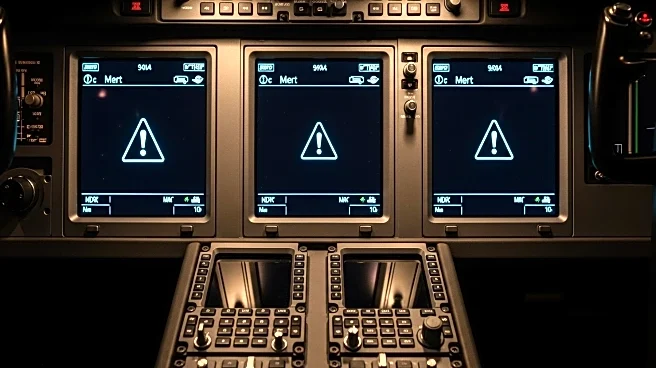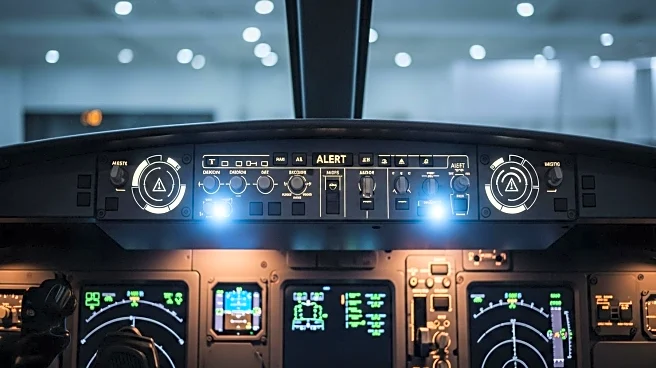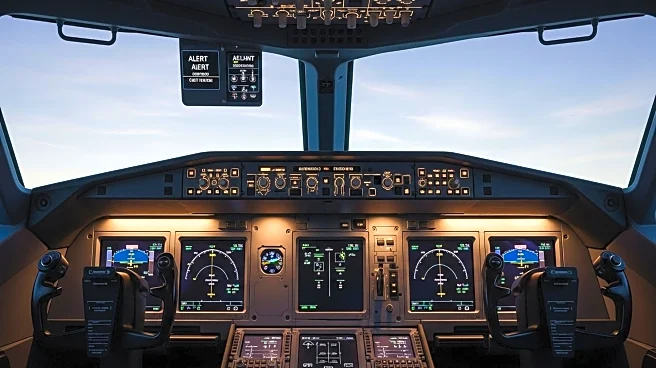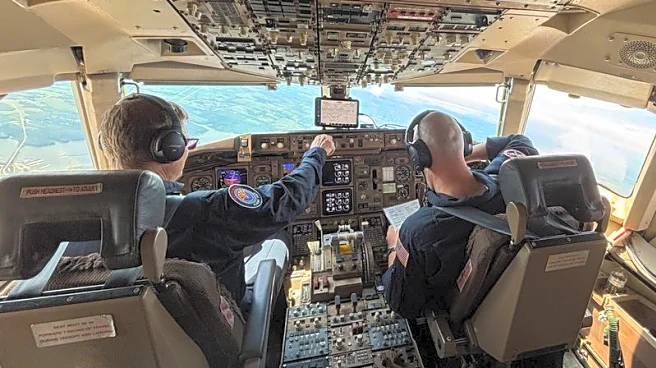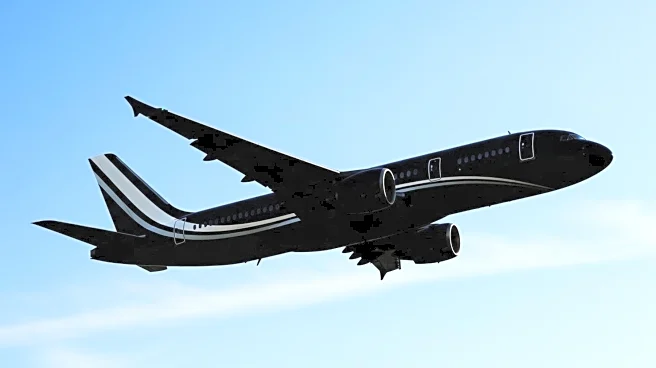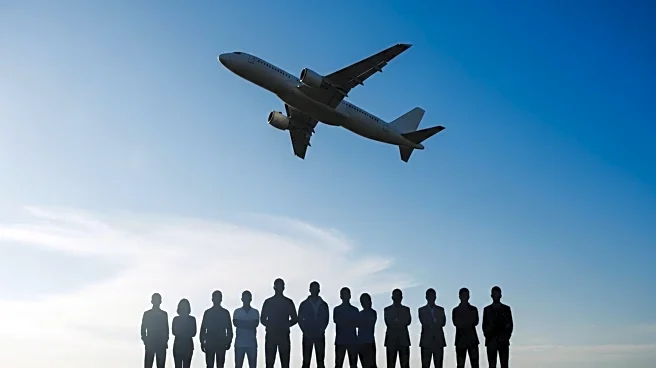What is the story about?
What's Happening?
Honeywell is testing new cockpit alerts, known as Surface Alert (SURF-A), designed to give pilots more time to react to potential hazards at airports. These alerts are being tested on a Honeywell Boeing 757 test plane, which recently simulated serious near-disasters at airports. The alerts aim to prevent runway incursions, which occur when a plane, person, or vehicle is on the runway when they shouldn't be. The National Transportation Safety Board and other safety experts have advocated for such advanced alerts to enhance safety at increasingly congested airports. Honeywell's SURF-A alerts use Automatic Dependent Surveillance – Broadcast (ADS-B) data, providing pilots with additional reaction time in case of potential collisions.
Why It's Important?
The development of advanced cockpit alerts by Honeywell addresses the growing concern over runway incursions and near-collisions at busy airports. With serious runway incursions peaking at 22 in 2023, these alerts could significantly enhance safety by providing pilots with crucial seconds to react to potential hazards. The implementation of such technology could prevent accidents, save lives, and reduce the financial and reputational costs associated with aviation incidents. As the busiest aviation market, the U.S. stands to benefit greatly from these advancements in aviation safety.
What's Next?
Honeywell expects the new cockpit alert system to receive regulatory certification next year. The alerts are currently in use on over 3,000 planes operated by 20 airlines, including Alaska Airlines and Southwest Airlines. The Federal Aviation Administration is reviewing recommendations to potentially require such alerts on new planes. As more airlines adopt this technology, the aviation industry could see a reduction in runway incursions and an overall improvement in safety standards.
AI Generated Content
Do you find this article useful?
